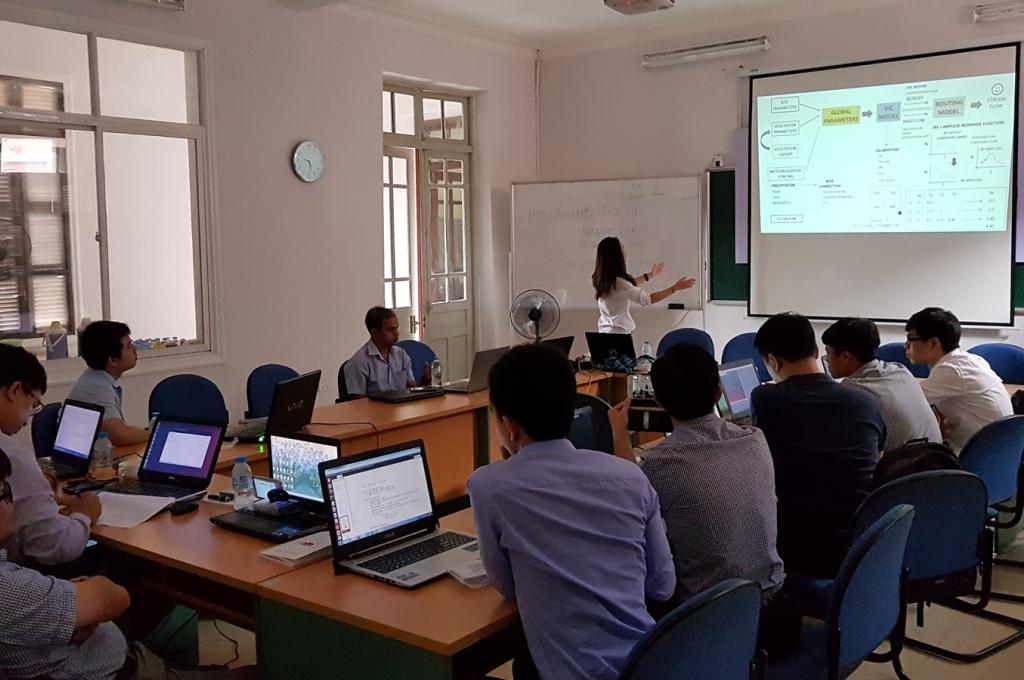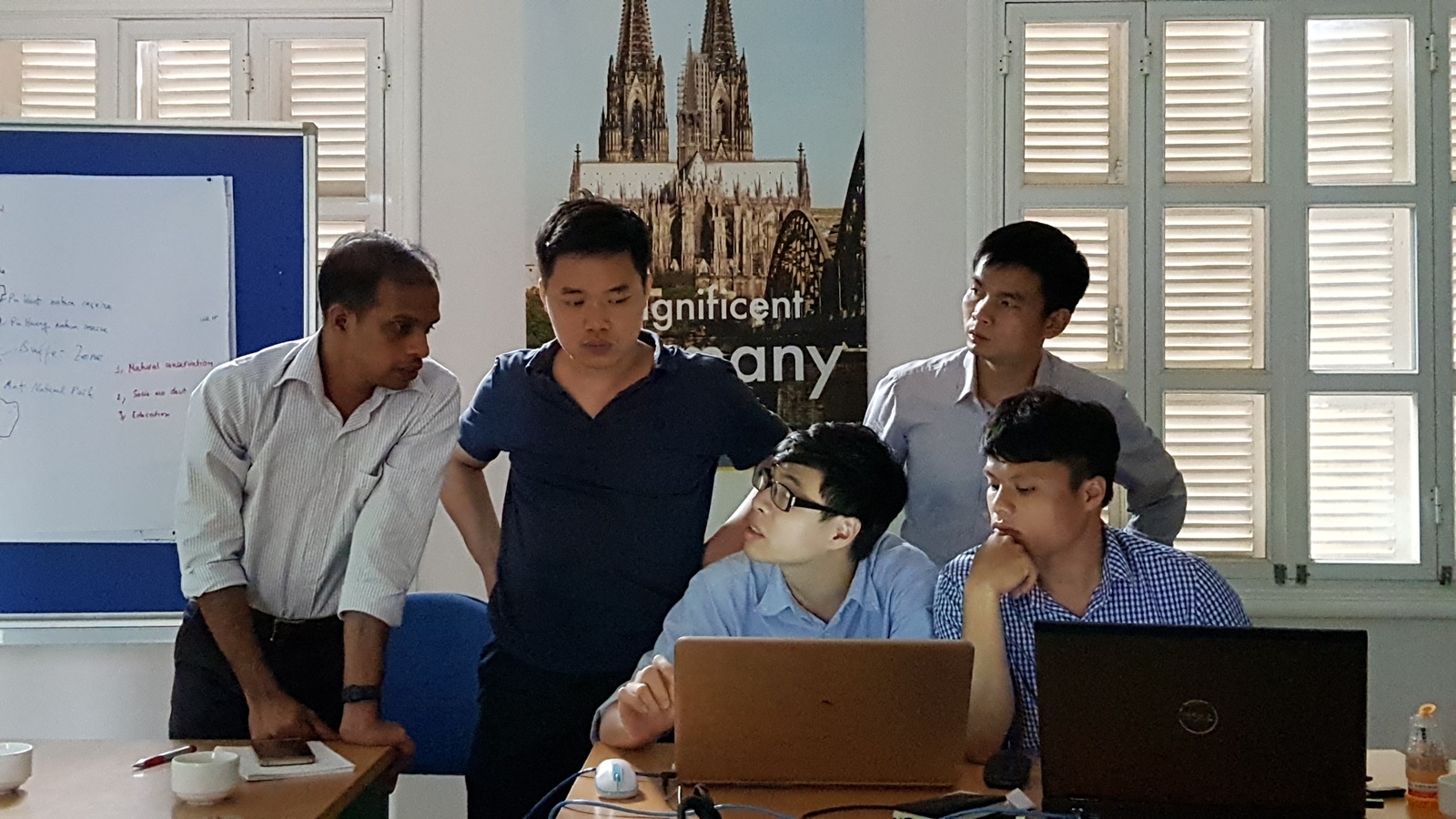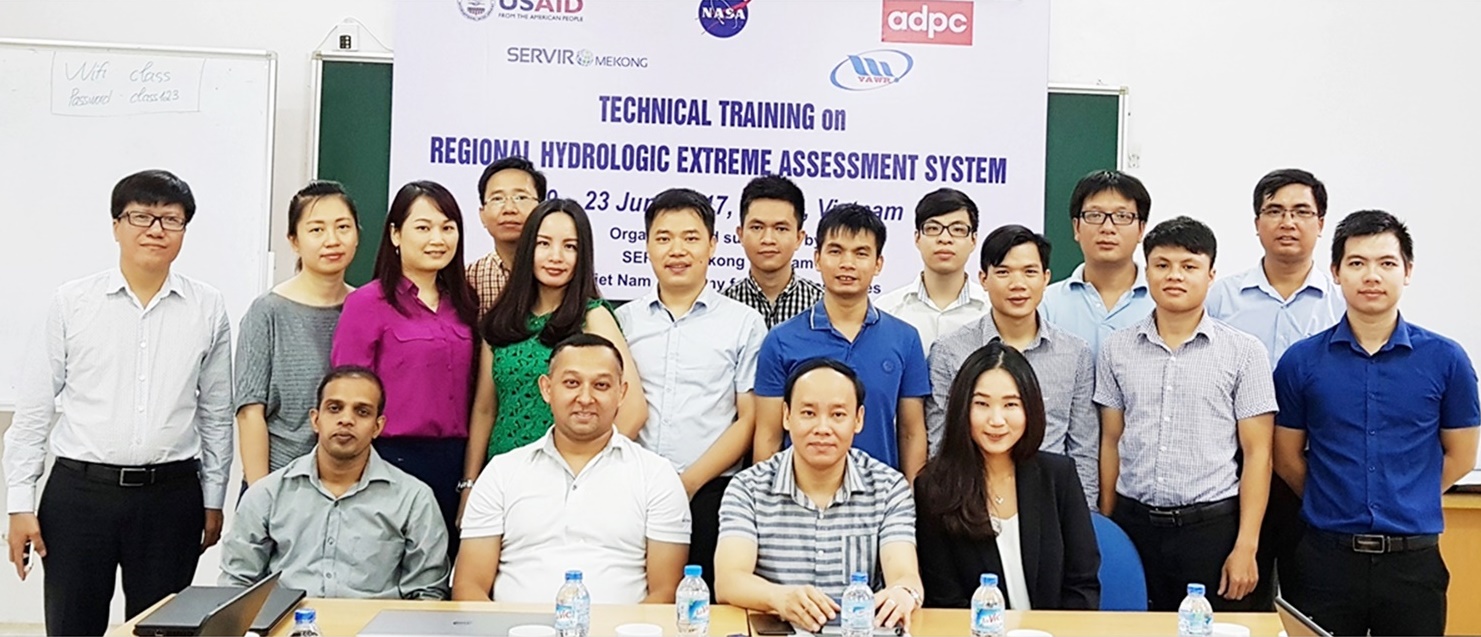Facilitating Decision Making: Tools That Monitor Drought Onset and Agriculture Productivity

Bridging the gaps between data producers and data users, SERVIR-Mekong has provided tools and hands-on training to the Vietnam Academy of Water Resources (VAWR) for real-life drought assessment in Ninh Thuan Province.
SERVIR-Mekong organized one-week of training for VAWR on the Regional Hydrologic Extreme Assessment System (RHEAS), which automates the deployment of water resource estimators for the current time period as well as for future time periods.
Developed by NASA’s Jet Propulsion Laboratory (NASA-JPL) for hydrologic modeling and drought data assimilation in Africa, RHEAS was leveraged to enhance the drought monitoring and improve crop yield information systems in the Lower Mekong region. The decision to bring this system to the Lower-Mekong region came in consultation with the region’s stakeholders and NASA scientists.
SERVIR-Mekong has been working closely with NASA-JPL to transfer and customize the technology from Africa so that it is compatible with the Lower Mekong region’s drought conditions.

The technology is part of the SERVIR-Mekong’s Regional Drought & Crop Yield Information System (RDCYIS), which is a direct response to the needs expressed by decision makers from Myanmar, Thailand, Lao PDR, Cambodia, and Vietnam. The system was designed to improve the ability of diverse users to prepare for and respond to drought conditions in the region. The VAWR is a local co-production partner of the RDCYIS with SERVIR-Mekong.
RHEAS is now being used by VAWR for a real-life drought issue in Ninh Thuan province, which is one of the most drought prone areas in Vietnam. This intervention is part of SERVIR-Mekong’s service delivery to Viet Nam in improving agricultural planning in the Ninh Thuan Province.
Dr. Nguyen Tung Phong, the Deputy Director of VAWR said, “I expect that systems like RHEAS will help the academy towards improving their skills in drought monitoring and forecasting efficiently, accurately, and timely.” He projected that the system would help provinces as well as the Department of Agriculture and Rural Development to respond to and take effective measures in a much quicker and efficient manner. Drought monitoring system like the RDCYIS and RHEAS will help in further improving and updating their provincial action plans for effective drought management.
“I am happy with SERVIR-Mekong’s unique service planning approach, unlike many other scientific projects,” Dr. Nguyen said, and added that “the theory of change helps me with a clear view of the impact and pathways to achieve the impact.”

VAWR’s technical staff received training on RHEAS from 19 to 23 June with technical support from NASA’s SERVIR Coordination Office. The training focused on providing the technical staff with hands-on practical sessions on RHEAS, starting from the system installation process, understanding its database and configuration file, running drought now-casts and forecast and customizing the system.
The training provided the participants with a tool and techniques to efficiently monitor and forecast drought. The participants also learned the system’s capability to share data through established and user friendly technologies such as web, desktop and mobile.
Dr. Tran Duc Trinh, Head of the Center for Training and International Cooperation, sees a long-term impact for effective management of drought in Vietnam, stating that “RHEAS itself would be an added advantage for VAWR since the system has the ability to ingest most of the remote sensing data relevant to hydrology and agriculture.”
The training was much appreciated by the academy as well as by the Ministry of Agriculture and Rural Development, Vietnam.




